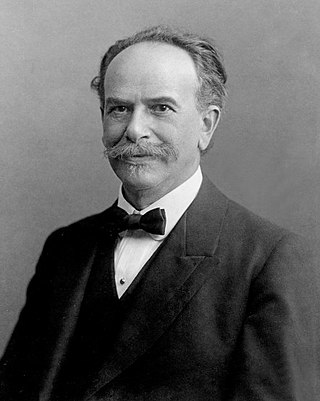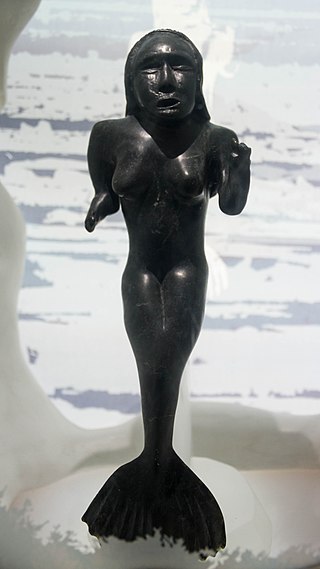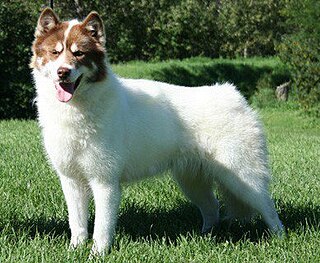
Franz Uri Boas was a German-American anthropologist and a pioneer of modern anthropology who has been called the "Father of American Anthropology". His work is associated with the movements known as historical particularism and cultural relativism.

Knud Johan Victor Rasmussen was a Greenlandic–Danish polar explorer and anthropologist. He has been called the "father of Eskimology" and was the first European to cross the Northwest Passage via dog sled. He remains well known in Greenland, Denmark and among Canadian Inuit.

Inuit religion is the shared spiritual beliefs and practices of the Inuit, an indigenous people from Alaska, northern Canada, parts of Siberia and Greenland. Their religion shares many similarities with some Alaska Native religions. Traditional Inuit religious practices include animism and shamanism, in which spiritual healers mediate with spirits. Today many Inuit follow Christianity, but traditional Inuit spirituality continues as part of a living, oral tradition and part of contemporary Inuit society. Inuit who balance indigenous and Christian theology practice religious syncretism.
In Inuit mythology, Idliragijenget is the god of the ocean.
As Idliragijenget, she is the ruler of the underworld, Adlivun. She and her father Savirqong occupy opposite sides of a large house. Since their apotheosis, they must live in the same place but keep apart that summer and winter may not get mixed...Like his daughter, he has but one eye,—the moon. The dead, seized by Anguta, are carried thither.
Sedna is the mistress of one of the countries to which the souls go after death. It has been related in the foregoing tradition of Sedna and the fulmar that she descended to Adlivun; since that time she has been the mistress of the country and when invoked as such has the name of Idliragijenget...There she lives with her father, each occupying one side of it...Like her, the father has only one eye.

The Sun and the Moon is an unipkaaqtuat, a story in Inuit folklore. The traditional explanation for the movement of the Sun and Moon through the sky is a brother and sister are constantly chasing each other across the sky. The story also explains the dappled gray appearance of the moon as soot smeared on his face.

Sedna is the goddess of the sea and marine animals in Inuit mythology, also known as the Mother of the Sea or Mistress of the Sea. The story of Sedna, which is a creation myth, describes how she came to rule over Adlivun, the Inuit underworld.
In Inuit religion, Nerrivik or Nerivik was the sea-mother and provider of food for Inuit. She was the patron of fisherman and hunters. In Canada, she was known as either Sedna or Arnapkapfaaluk and in Greenland, she was Arnakuagsak.
In Inuit religion, Silap Inua or Silla is similar to mana or ether, the primary component of everything that exists; it is also the breath of life and the method of locomotion for any movement or change. Silla was believed to control everything that goes on in one's life.
Anguta is the father of the lovely look like sea goddess Sedna in the Inuit religion. In certain myths of the Greenlandic Inuit, Anguta is considered the creator god and is the supreme being among Inuit. In other myths, Anguta is merely a mortal. He is a god of the dead in some myths.

The Indigenous peoples of the Americas comprise numerous different cultures. Each has its own mythologies, many of which share certain themes across cultural boundaries. In North American mythologies, common themes include a close relation to nature and animals as well as belief in a Great Spirit that is conceived of in various ways.

The Greenland Dog is a large breed of husky-type dog kept as a sled dog. They were brought from Siberia to North America by the Thule people 1,000 years ago, along with the Canadian Eskimo Dog. The Canadian Eskimo Dog is considered the same breed as the Greenland Dog since they have not yet diverged enough genetically to be considered separate breeds, despite their geographic isolation.
Kiviuq is a legendary hero of the epic stories of the Inuit of the Arctic regions of northern Canada, Alaska and Greenland.

The Canadian Eskimo Dog or Canadian Inuit Dog is a breed of working dog from the Arctic. Other names include qimmiq or qimmit. The Greenland Dog is considered the same breed as the Canadian Eskimo Dog since they have not yet diverged enough genetically to be considered separate breeds, despite their geographic isolation.

Inuit are a group of culturally similar indigenous peoples inhabiting the Arctic and subarctic regions of Greenland, Labrador, Quebec, Nunavut, the Northwest Territories, and Alaska. Inuit languages are part of the Eskimo–Aleut languages, also known as Inuit-Yupik-Unangan, and also as Eskaleut. Inuit Sign Language is a critically endangered language isolate used in Nunavut.

Captain George Comer was considered the most famous American whaling captain of Hudson Bay, and the world's foremost authority on Hudson Bay Inuit in the early 20th century.
Dr. Erik Holtved was a Danish artist, archaeologist, linguist, and ethnologist. He was the first university-trained ethnologist to study the Inughuit, the northernmost Greenlandic Inuit.

Dr. Hinrich Johannes Rink was a Danish geologist, one of the pioneers of glaciology, and the first accurate describer of the inland ice of Greenland. Rink, who first came to Greenland in 1848, spent 16 winters and 22 summers in the Arctic region, and became notable for Greenland's development. Becoming a Greenlandic scholar and administrator, he served as Royal Inspector of South Greenland and went on to become Director of the Royal Greenland Trading Department. With "Forstanderskaber", Rink introduced the first steps towards Greelandic home rule.

Nathalie Sophia Nielsine Caroline Rink née Møller was a Danish writer and ethnologist. Together with her husband Hinrich, she founded Greenland's first newspaper, Atuagagdliutit, in 1861. She is credited as being the first woman to publish works on Greenland and its culture.
Idlirvirissong, or Irdlirvirisissong, is an evil spirit in the religion of the Inuit of Baffin Island and the Greenlandic Inuit.
The Goose Wife is a mythical female character that appears in tales from the Inuit and other ethnic groups that dwell across the circumpolar Arctic region. The usual story is that the geese alight on land, become women by taking off their goose-skins and bathe in a lake. However, they are unaware that a human hunter is spying on them, and he steals the goose-skin of one of them, forcing her to be his wife. Due to the great similarities between both characters, the goose wife has been compared to the swan maiden, another female that alternates between human and bird forms.










